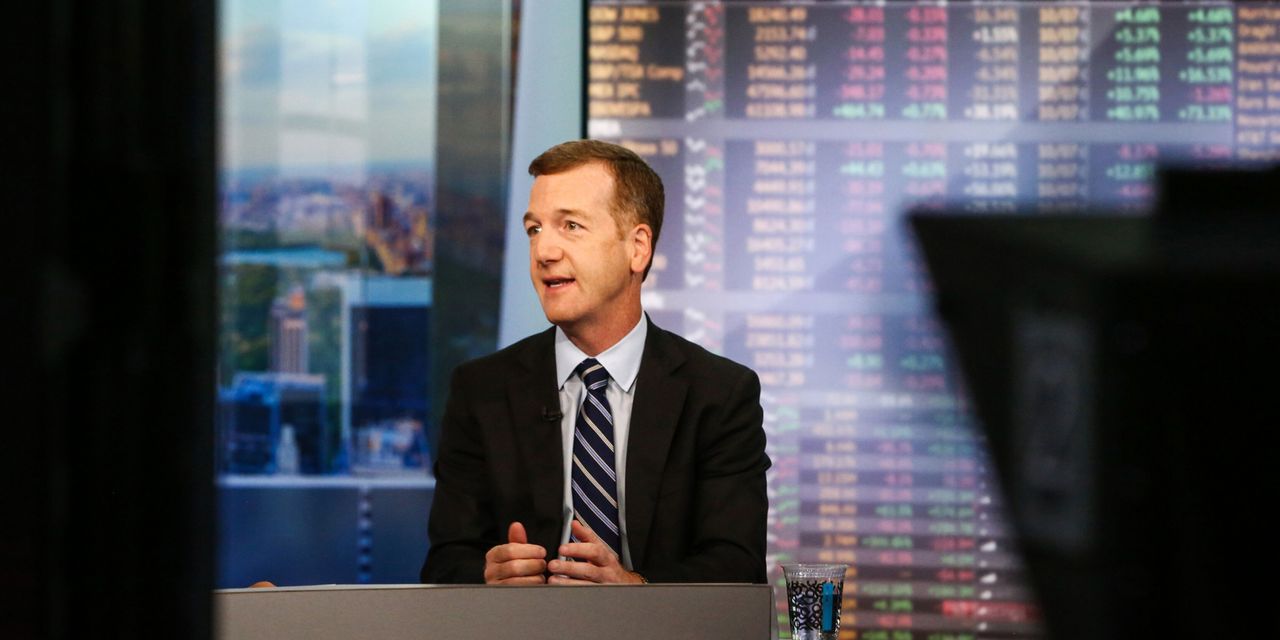The stock market’s gain has been so powerful that one of Wall Street’s most prominent skeptics is turning a touch more upbeat. That speaks volumes about how the outlook has improved.
The
S&P 500
has gained 28% from the bear-market low it hit in early October despite concern that the Federal Reserve’s rate increases, meant to fight inflation by reducing demand for goods and services, would trigger a recession. Even this spring’s failures of regional banks haven’t derailed the gains.
The Fed and large banks stepped in to shore up liquidity in the financial system, and the recession has failed to arrive, so stocks are rising. Investors are looking past the potential damage from higher borrowing costs, anticipating the end of the rate-increase campaign, and counting on strong demand and growing corporate profits next year.
For bears, the catch is that the market has become more expensive, while risks remain. They see that combination as a setup for one more drop.
The S&P 500 now trades at almost 20 times the aggregate earnings per share its component companies are expected to produce over the next year, up from about 15 times at the start of the rally. Higher rates tend to hit the economy with a delay, so economic growth could slow further.
Analysts have already reduced their forecasts for corporate earnings this year, but weaker growth could bring more of the same. And while the declining rate of inflation should ultimately give people more money to spend, it could hurt sales in the short term as companies raise prices less aggressively. That might hurt profit margins and EPS.
Falling inflation and a stock market that is shrugging off still-high rates are two core elements of a bearish call from Mike Wilson,
Morgan Stanley’s
chief U.S. equity strategist. His target for the S&P 500 is 4200 by the middle of next year, for an 8% drop, but his worst-case scenario is that the market could fall 19% to 3700.
A recent comments was just a little more bullish. Several of his research notes this year said the market is vulnerable to a drop, but his Monday note this week didn’t mention that risk.
Wilson also called the rally a “policy-driven” one, referring to expectations about the Fed’s next moves. He compared stocks’ recent gains to what happened in at the end of 2018 and in 2019, when stocks started rising in anticipation of easier monetary policy and kept on going as the Fed cut rates.
The market’s moves today are likewise based on expectations of a more accommodating Fed, with the obvious difference that policy makers may not be ready to lower rates this year, he said. Federal Reserve Chairman Jerome Powell has said rate cuts in 2023 are highly unlikely.
Overall, “the 2019 analogy, in and of itself, suggests more index level upside from here,” Wilson wrote. “Others suggest we are in a new cyclical upturn. While we’re open-minded to this view eventually materializing, we’d like to see a broader swath of business cycle indicators inflect higher.”
He didn’t immediately respond to a request to discuss his views.
Specifically, Morgan Stanley wants to see a larger breadth of stocks participating in the rally. The Invesco S&P 500 Equal Weight exchange-traded fund (RSP), which weights each stock in the index equally so it isn’t thrown off by moves in large-cap companies, is still up by only single digits this year. That is about half of the standard index’s 2023 gain. The implication is that if tech stocks like
Microsoft
(MSFT) and
Apple
(AAPL) head south, so will the index, unless other shares pick up the slack.
Another positive sign, Morgan Stanley says, would be if short-term interest rates come down. That would support, or even boost, economic growth.
The bank hasn’t increased its S&P 500 forecast yet, but it is clearly monitoring the factors that would prompt it to do so.
Citigroup
strategists, meanwhile, raised their forecast on the S&P 500 this week as the market has rallied.
Piper Sandler
strategists did the same.
The point is that Wilson, a noted and steadfast bear, is now giving a nod to the market’s recent strength. Maybe this really is a long-term bull market.
Write to Jacob Sonenshine at [email protected]
Read the full article here





